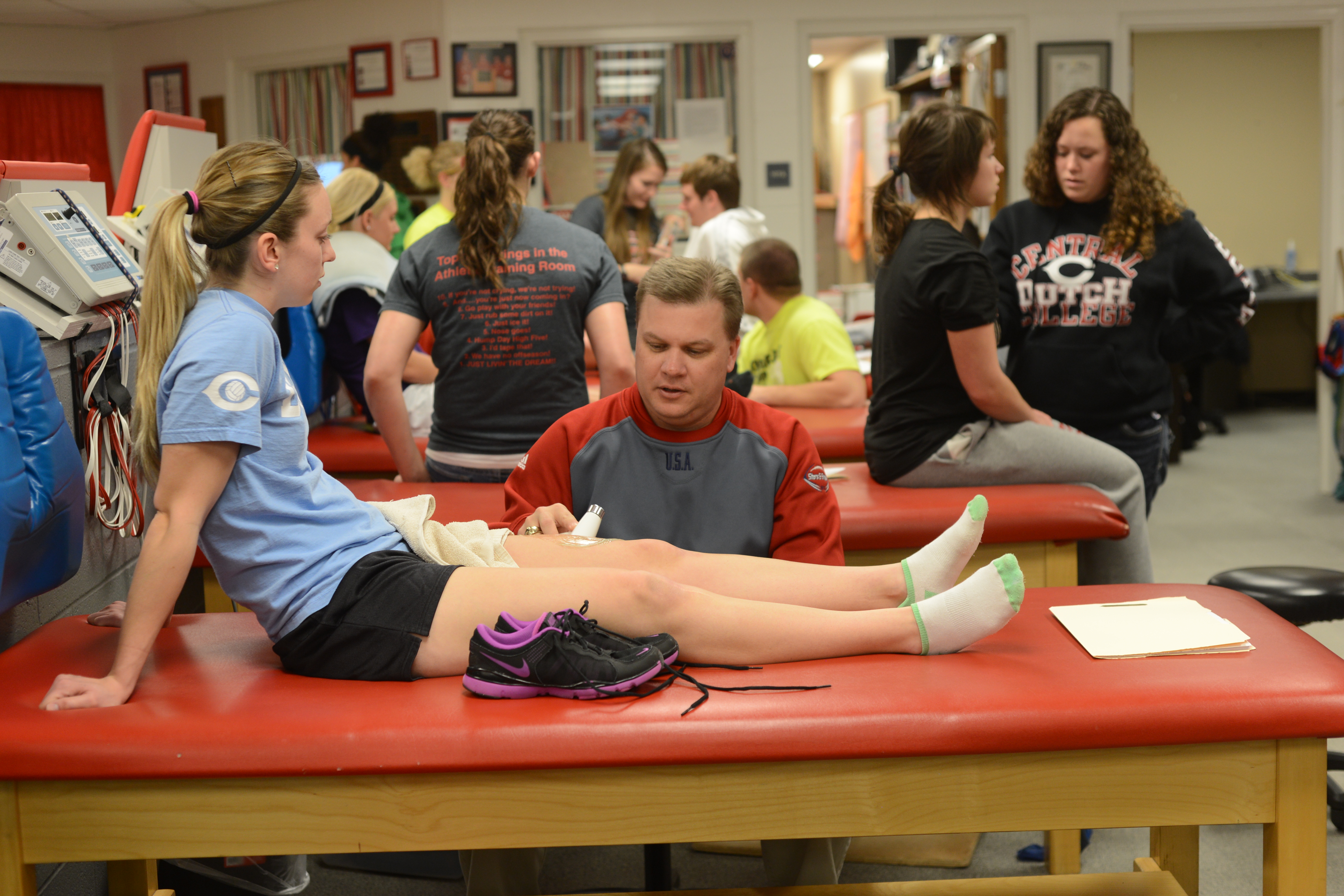Everybody needs an athletic trainer. That is the message of the National Athletic Trainers’ Association, which has declared March National Athletic Training Month.
Students in Central’s athletic training education program (ATEP) base their future careers on that message, and they wanted to help spread the word. With the help of Dustin Briggs, assistant athletic trainer and clinical instructor of exercise science, nearly 30 students—dressed in their athletic training polo shirts—went to the Pella City Council to lobby for a proclamation declaring March Athletic Training Month in Pella.
“I think the city council and mayor are truly appreciative of the things we do and were amazed by the numbers we had representing the ATEP at Central College,” says Briggs.

This was the second year in a row that Pella has declared March Athletic Training Month. Central College has had a huge influence on the town’s belief in the importance of athletic training as a profession. Central’s program was founded 25 years ago by John Roslien, associate professor of exercise science and the program’s first and only director over the years. Now ATEP boasts 46 sophomores through seniors, with many first-year students looking to apply.
Central’s program stresses hands-on experience for the future athletic trainers. Some travel to Europe for two-week intensive programs, while also work with professional sports organizations such as the Chicago Cubs, Green Bay Packers and Detroit Lions. This week, nine Central students are representing the college at the MAATA (Mid-America Athletic Trainers’ Association) Athletic Training Meeting and Symposium in Tulsa, Okla.
“Central College has a long and strong tradition of producing well-rounded professionals,” says Briggs. “Central College prepares our students to be lifelong learners with a passion to serve in many different ways.”
While promoting Athletic Training Month, Central’s athletic training majors are also stressing the importance of having athletic trainers in all high schools. A high proportion of high school students have limited or no access to health care professionals or athletic trainers who know how to prevent injuries and provide appropriate emergency care. Briggs says that many athletes die each year due to poor control measures and lack of appropriate medical supervision.
 “There are numerous risks associated with sports at all levels, and athletic trainers are highly trained in preventing, recognizing and treating these injuries,” says Briggs. “Athletic trainers are uniquely educated on pre-participation screening, recognition of emergency situations and treating and providing a step-wise progression for return to play.”
“There are numerous risks associated with sports at all levels, and athletic trainers are highly trained in preventing, recognizing and treating these injuries,” says Briggs. “Athletic trainers are uniquely educated on pre-participation screening, recognition of emergency situations and treating and providing a step-wise progression for return to play.”
Despite their titles, athletic trainers aren’t just for athletes. Thus, NATA’s philosophy that everybody needs an athletic trainer. “Some of the same conditions that afflict the general population are the same conditions that athletic trainers see on a day-to-day basis,” says Briggs. “Athletic trainers have a history of quicker return to play/return to work and at a significant savings.”
For example, the average worker with a back injury may miss four or more weeks of work and have to transition to a less rigorous role in the workplace. Because athletic trainers treat injuries with a sense of urgency, the worker is likely to get back to the “field” or factory sooner and at the same or better function than before the injury.
This month’s experience with the city council has reinforced students’ belief in the purpose of their profession.
According to Briggs, “The staff fervently promotes involvement in the profession and always tells the students, ‘You can truly do whatever you want to do.



